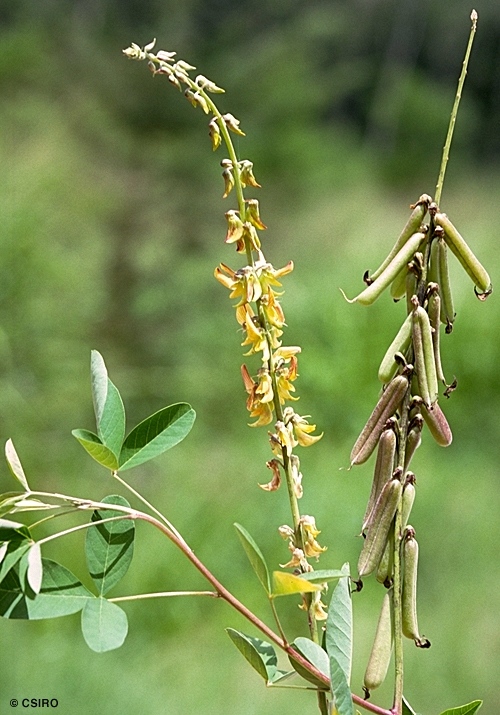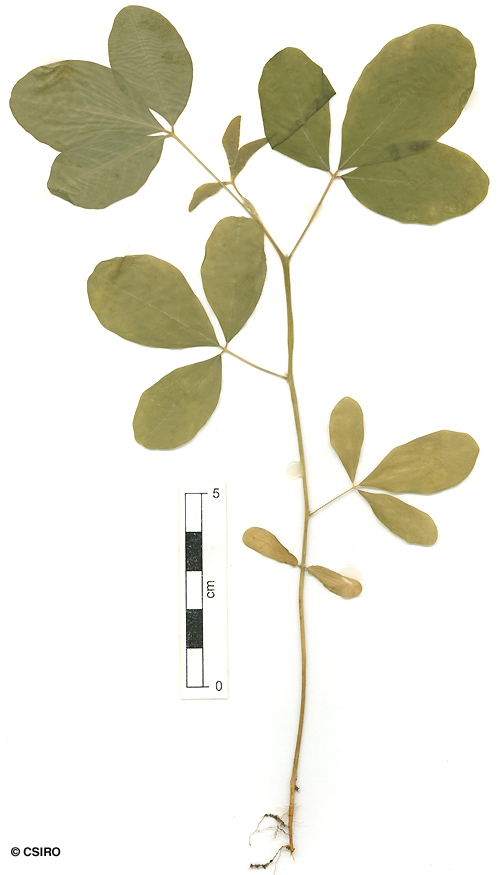Australian Tropical Rainforest Plants - Online edition
Crotalaria pallida Aiton




Aiton, W. (1789) Hortus Kewensis 3: 20. Type: Nat. of Africa. James Bruce, Esq.
Rattlepod; Rattlepod, Streaked; Streaked Rattlepod
Usually flowers and fruits as a shrub 1-1.5 m tall but also flowers as a herb.
Inflorescences about 15-45 cm long. Flowers borne singly in the axils of deciduous, about 2-5 mm long, bracts. Calyx about 6-7.5 mm long, lobes about as long as the tube. Petals: standard about 10-12 x 8 mm; wings much shorter than the keel; keel about 12-15 mm long. Standard and keel marked by red-purple striations (veins). Stamens 10, dimorphic, five anthers long and basifixed, and five anthers short and dorsifixed. Anther filaments fused to form a tube open on one side. Pollen orange. Ovary densely clothed in white hairs.
Pods cylindrical, about 30-45 x 8-9 mm, grooved on one side, clothed in erect hairs. Seeds rattle when pods are shaken. Seeds about 3 x 2 mm, mottled light and dark brown, laterally compressed, +/- hook-shaped or boomerang-shaped. Radicle beside and +/- parallel to the axis of the cotyledons.
Cotyledons about 13-17 x 6-7 mm. First pair of leaves trifoliolate and alternate. At the tenth leaf stage: stipules filiform to narrowly triangular, about 1-5 mm long. Stems, terminal buds and petioles densely clothed in pale brown prostrate hairs. Two small ridges run down the stem from the base of each petiole. Seed germination time 6 to 25 days.
An introduced species originally from tropical America, now naturalised in WA, NT, CYP, NEQ, CEQ and southwards as far as north-eastern New South Wales. Altitudinal range in CYP and NEQ from near sea level to 800 m. Usually grows as a weed on agricultural land but also found along roads and in disturbed areas in rain forest, vine thickets, open forest and grassland.
This species is suspected of poisoning sheep and cattle. Everist (1974).
Food plant for the larval stages of the Pen Blue Butterfly. Common & Waterhouse (1981).
Used in India as a cover crop. This species is attractive to cattle but fodder and seeds are toxic. Hacker (1990).





